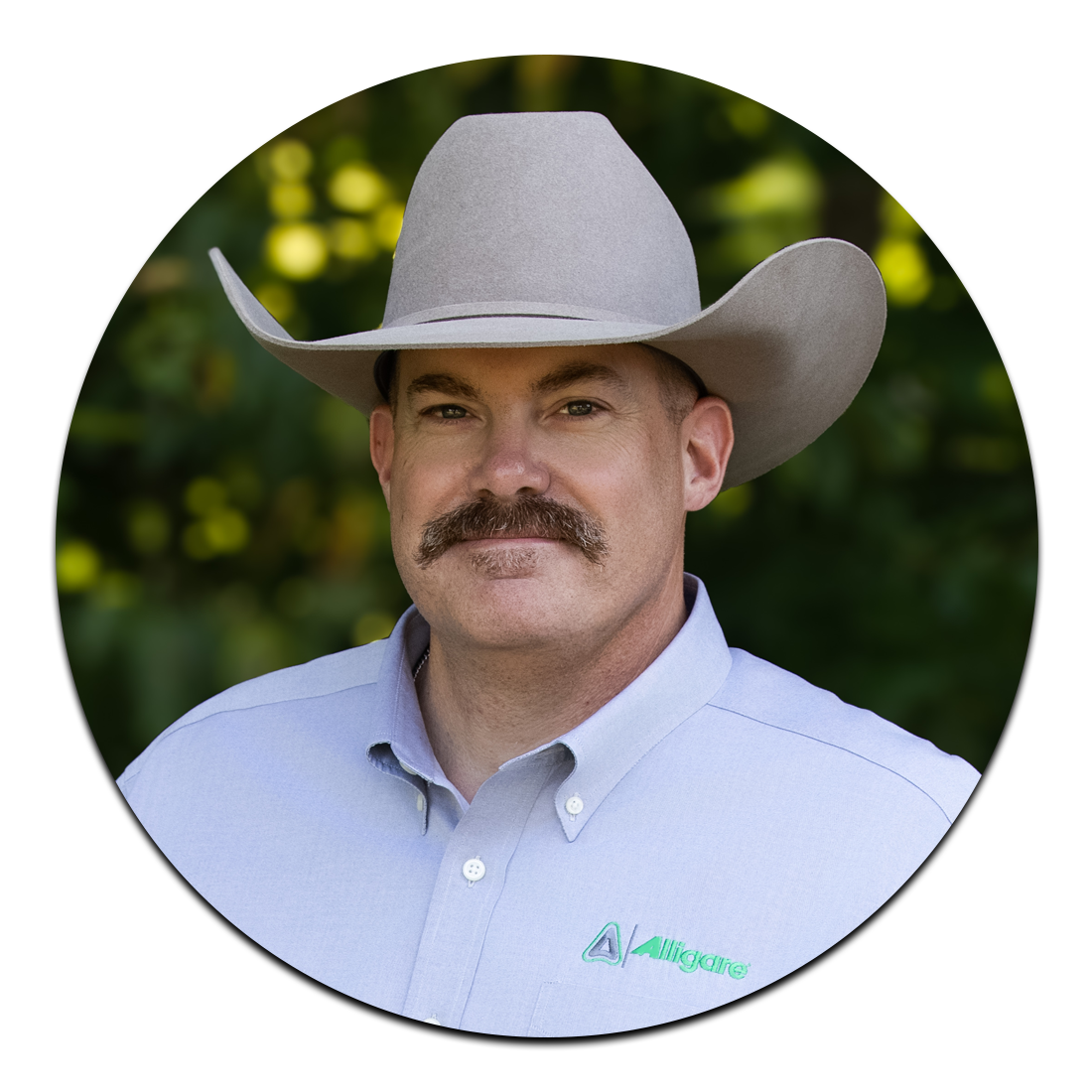Every season, land managers and livestock producers face the same dilemma: “Should I fertilize my pastures to boost forage production, or apply herbicide to control broadleaf weeds?” Historically, the answer leaned toward fertilization. But this often came at a cost, an explosion of weed growth that ultimately competed with the forage you were trying to support.
Now, thanks to the Alligraze program from Alligare, you no longer have to choose. Alligraze combines dry fertilizer with a residual herbicide in a single application, giving you a dual-action solution that promotes vigorous forage growth while suppressing aggressive broadleaf weeds.
Understanding the Threat of Broadleaf Weeds
Broadleaf weeds like thistle, buttercup, poison hemlock, and dandelion are more than just eyesores; they compete aggressively with desirable forage species for water and nutrients. These weeds reduce both the quality and quantity of available forage, ultimately impacting livestock health and pasture profitability. A tell-tale sign of forage root depth is how tall the forage is above the ground. The height of your grass is a good or bad reflection of healthy root depth.
 Figure 1
Figure 1
Fibrous root system (left)
This is typical of grasses and forage species. They have many thin, branching roots that spread out near the soil surface, forming a dense mat. This root system supports nutrient uptake, helps them hold soil in place, absorb surface water quickly, and recover well from grazing, but they usually don’t reach as deep. When weeds compete, they win the battle for nutrients, that our forages must have to thrive.
Taproot system (right)
This is typical of many broadleaf weeds like dandelion, thistle, and buttercup. They send down a single thick primary root deep into the soil to access water and nutrients below the reach of grasses, which gives them a competitive advantage during drought or stress.
These persistent invaders:
-
Steal water and nutrients from your forage grasses
-
Outcompete desirable species due to faster early-season growth
-
Reduce grazing capacity and hay quality
-
Pose health risks to livestock due to toxicity or low palatability
Even with regular fertilization, if weeds are left unchecked, they thrive on the same nutrients you’re trying to provide your forages, essentially turning your investment into fuel for the wrong plants.
Why Fertilizer-only Approaches Fall Short
Many ranchers traditionally chose fertilizer over herbicide, assuming it was the fastest way to green up their pastures. While fertilization does stimulate growth, it also feeds the weeds. In fact, because many broadleaf weeds have more aggressive early root development, they quickly absorb the nutrients and outpace forage grasses.
The result? Lush weed growth, limited forage improvement, and a wasted opportunity to maximize the land’s true potential.
The Alligraze Solution: Fertilizer and Herbicide in One Efficient Application
Alligraze changes the game by allowing you to combine your dry fertilizer with a residual herbicide, either Gunslinger® AMP or Prescott™ (a non-2,4-D option), to gain both fertility and weed control benefits in one field pass.
Key Benefits:
-
Dual-action impact: Fertilizes forages and suppresses broadleaf weeds simultaneously
-
Season-long control: Residual herbicide activity reduces future weed pressure
-
Single application efficiency: Saves time, labor, and fuel costs
-
Improved forage establishment: Reduces competition so grasses thrive
-
Increased profitability: Better pasture health, improved grazing capacity, and higher quality hay
No more deciding which application to prioritize. With Alligraze, you get both, maximizing return on investment while improving pasture health.
How it Works: The Dual Benefits of Combining Fertilizer and Herbicide
To ensure even distribution and maximum effectiveness, the Alligraze program involves a straightforward blending and application process:
-
Apply a minimum of 200 lbs. of dry fertilizer per acre. This rate ensures adequate coverage of the herbicide on the fertilizer prills.
-
Add 32 oz./A of Gunslinger AMP or Prescott to the fertilizer in a dedicated blender. A dye indicator is included to visually confirm even herbicide coating.
-
During application, the treated prills are broadcast across the pasture. Upon contact with rainfall or heavy dew, the herbicide activates, targeting broadleaf weeds on the soil surface and emerging plant tissue.
This approach creates a favorable environment for desirable forage species to flourish, without the resource competition that comes from unchecked weed growth.
When to Apply
Timing is everything. For best results, apply the Alligraze mixture during:
-
Early spring, when broadleaf weeds are beginning to grow but haven’t matured.
-
Early fall, when temperatures are cooler and weeds are still actively growing.
Targeting weeds at this stage maximizes herbicide absorption and ensures longer-lasting control throughout the season.

Maintaining Long-term Pasture Health
While Alligraze offers a powerful jump-start to improved pasture conditions, true long-term success comes from sustainable management practices:
-
Conduct regular soil testing. Monitor nutrient levels and tailor fertilizer applications based on real data.
-
Implement rotational grazing. Avoid overgrazing, which weakens forage stands and allows weeds to spread.
-
Scout regularly. Keep an eye out for early signs of weed resurgence and apply targeted treatments as needed.
Ready to take the next step?
By pairing smart pasture management with the Alligraze program, you can ensure that your pastures stay productive, balanced, and profitable year after year. For more information, please contact your local Alligare Range & Pasture specialist or find more information at www.alligare.com/alligraze.



